Head and Neck Pain
Muscle knots in muscles located in the neck and upper back/shoulder area can cause headaches, neck, and head pain. Muscle knots can cause headaches on the side of the head, the top of the head, behind the eye, and over the eye. Muscle knots can also cause jaw pain, tooth pain, TMJ symptoms, and pain within the ear. Muscle knots in the muscle responsible for shrugging the shoulders or bringing the shoulders towards the ear (the upper trapezius) can create a “question mark” headache pattern around the ear.

Causes

I Feel
Headaches
That nagging, aching headache that seems to start at the back of your head and wrap forward is often caused by tight muscle knots in the large muscle across your upper back, the trapezius. It’s like a tight helmet gradually squeezing your skull. The discomfort usually centers at the base of the skull and temples, presenting as a deep, constant ache that can mimic more serious issues like tension headaches or cervicogenic migraines. You’ll find the headache worsens when you engage in activities that tense the shoulders, such as sitting hunched over a keyboard, clenching your jaw, or carrying a heavy shoulder bag. This tension creates restriction, leaving your neck feeling stiff and making it hard to find a comfortable head position. That area is also extremely sensitive to touch—pressing just above the shoulder blade or along the side of the neck can feel unexpectedly tender, almost like a bruise you didn’t realize was there.
Pain Around the Eye
That sharp, surprising pain around the eye or in the temple area is often referred to as pain coming from tight muscle knots in the muscle that holds your shoulder up, the trapezius. It’s like a wire from your shoulder is tugging right behind your eye socket. The discomfort usually concentrates around the temple and behind the eye, presenting as a sharp, pulsing ache that can mimic deeper problems like migraines or sinus inflammation. You’ll notice that the pain worsens when you engage in activities that tense the neck, such as holding the phone against your shoulder, looking up quickly, or sitting without neck support for long periods. The resulting restriction leaves your neck feeling guarded and stiff, limiting your ability to turn your head. The muscle tissue high on your upper shoulder is often sensitive to pressure and feels like a tender, tight band.
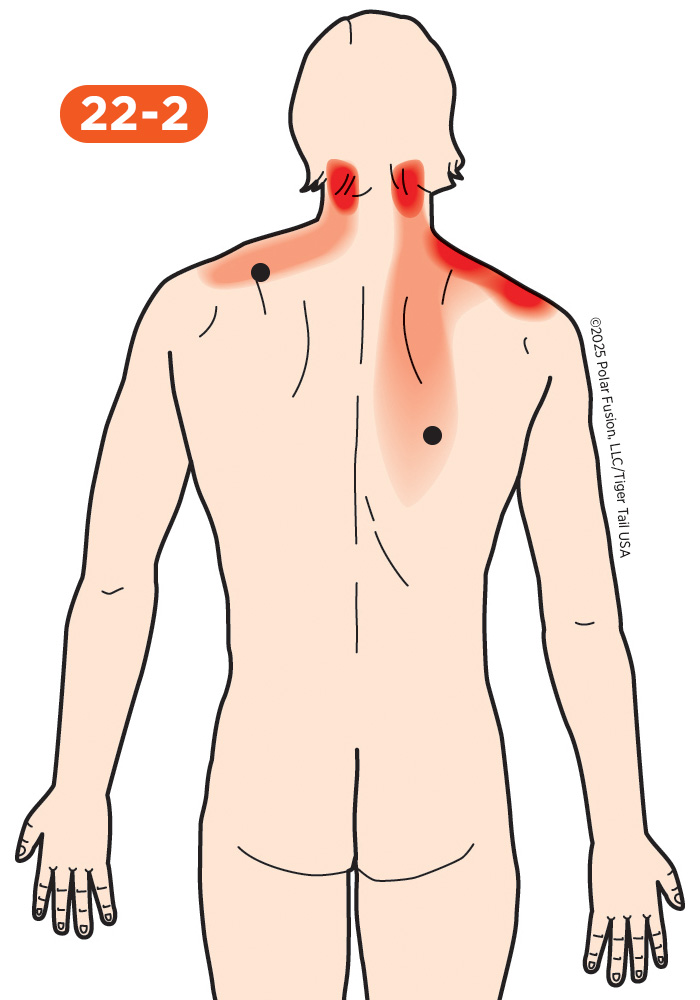
I Feel
Stiff and Achy Neck
That persistent, constant feeling of a stiff and aching neck is often caused by tight muscle knots in the large muscle across your upper back, the trapezius. It feels like your neck muscles are permanently frozen in place. The discomfort usually concentrates right at the base of the skull and upper shoulder, presenting as a deep, constant ache that can mimic more serious issues like cervical joint dysfunction or spinal arthritis. The stiffness tends to worsen during activities that raise the shoulders, such as sitting hunched over a keyboard, carrying a heavy bag on one shoulder, or shrugging repeatedly. This restriction leaves your neck feeling stiff, limiting your ability to turn your head or find a comfortable resting position. The muscle high on your upper shoulder is often sensitive to pressure and feels like a tender, taut band.

I Feel
Pain on Top of Head
It’s like someone’s slowly tightening a headband around the crown of your skull—this aching, pressure-like pain on top of your head can originate from muscle knots in the muscle across the upper back, the upper trapezius. The discomfort often runs upward from the top of the shoulder and neck, feeling like a deep, nagging ache or a sharp, pulsing tension. It can mimic cervicogenic headaches or even sinus pressure, which makes it easy to misinterpret. The pain worsens when you do things like shrugging your shoulders to lift a bag, tilting your head back to rinse shampoo, or sitting hunched over a laptop for extended periods. You might feel stiff and guarded, as if your neck and shoulders are locked in place, making it nearly impossible to turn your head or relax your posture. The area is particularly sensitive to touch—pressing just above the shoulder blade or along the side of the neck often reveals a tender, ropey spot that feels sore and reactive.
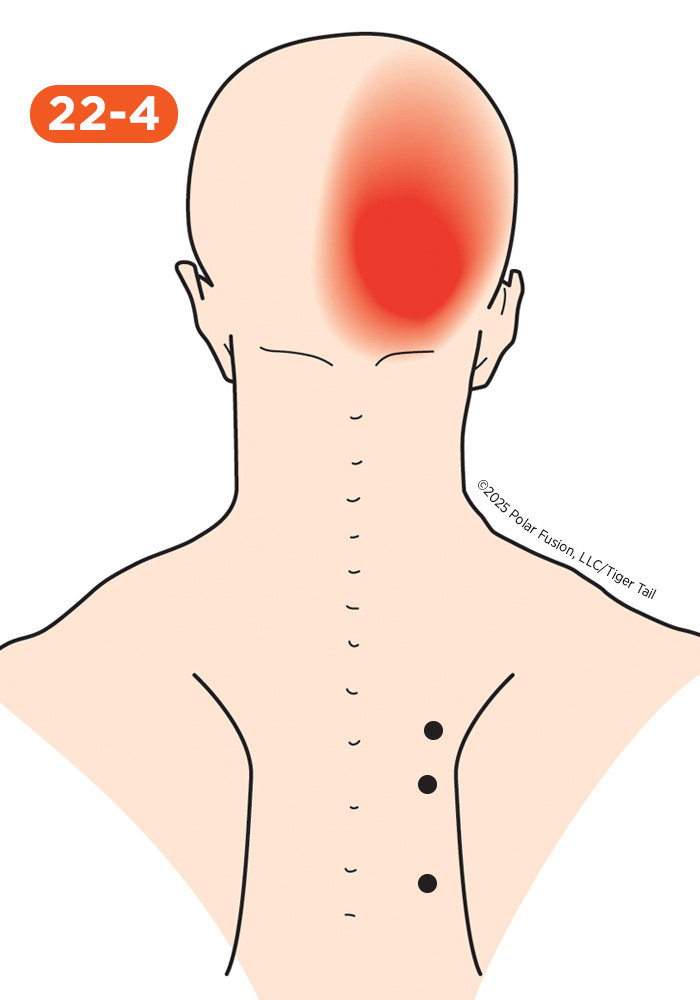
I Feel
Pain at the Back of the Head
It’s like someone’s tugging on a string from between your shoulder blades all the way up to the base of your skull, like a dull, dragging pain at the back of your head can come from muscle knots in muscles between the shoulder blades, the rhomboids. The ache usually focuses near the occipital area, feeling like a deep, persistent pressure or a stabbing sensation right where your head meets your neck. It can mimic occipital neuralgia or even a tension headache, which can cause confusion during diagnosis. The pain worsens significantly when you do things like pulling your shoulder blades together during posture correction, reaching behind to fasten a bra or seatbelt, or lying flat on a firm pillow. You may feel guarded and restricted, as if your upper back and neck are bracing against movement, which limits your ability to rotate or tilt your head freely. That region is also very responsive to pressure—pressing between the shoulder blades or along the spine near the base of the neck often triggers a surprisingly sharp tenderness.

I Feel
Cheek Pain
That achy cheek pain you feel, often spreading into your jaw, is usually caused by tight muscle knots in the large muscle on the side of your head, the temporalis muscle. It feels like a dull, heavy pressure constantly squeezing the side of your face. The discomfort typically focuses along the cheekbone and upper jaw, presenting as a deep, dull ache that can mimic more serious issues like sinusitis or TMJ dysfunction. You’ll notice the pain worsens during activities that involve your jaw, such as chewing tough or sticky foods, clenching your jaw when stressed, or yawning wide. This restriction causes your jaw to feel stiff and guarded, limiting how wide you can open your mouth. The muscle tissue on the side of your head, above your ear, is often sensitive to pressure and may feel like a tender, taut band.
Pain Around the Eye
That sharp, surprising pain around the eye or behind the orbit is often referred to as pain coming from tight muscle knots in the muscle on the side of the head, the temporalis. It feels like a constant tension headache that sits right behind your eye socket. The discomfort usually focuses behind the eye and extends into the temple, presenting as a sharp, pulsing ache that can imitate deeper problems like migraines or cluster headaches. You’ll find the pain worsens significantly when you do activities that tense the jaw, such as clenching your teeth at night, chewing gum repeatedly, or biting down hard on something. The resulting tension leaves your eye area feeling tight and heavy, often causing light sensitivity. The muscle tissue on the side of your head, above your ear, is often prone to pressure and feels like a tender, taut band.
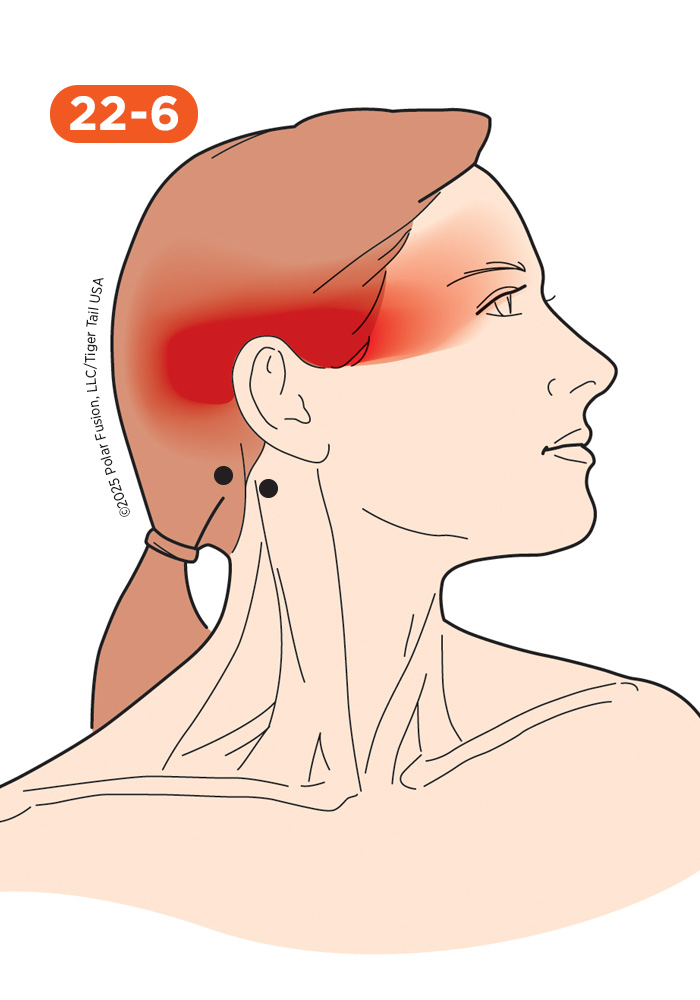
I Feel
Pain Around the Eye
It’s like someone gently presses a thumb into the back of your neck while a dull ache slowly moves forward and settles behind your eye—that type of eye pain can originate from muscle knots in the muscles at the base of the skull, known as the suboccipital muscles. The discomfort typically feels deep and pressure-like, often radiating from the base of the skull and wrapping around to the front, almost like a tension band. It can resemble cervicogenic headaches or even cluster headaches. The pain worsens considerably when you do activities like looking up for a long time (such as painting a ceiling), craning your neck while reading, or sleeping with your head turned sharply to one side. You may also feel guarded and heavy-headed, with limited ability to tilt or rotate your neck comfortably. That area is quite sensitive to touch—pressing just under the base of the skull, near the top of the neck, often reveals a tender spot that feels like it’s “wired” to the eye pain.

I Feel
Pain Around the Eye
It’s like someone’s gripping the side of your face and sending a dull ache straight through your cheekbone into your eye—that kind of pain can come from muscle knots in the muscle along the jawline, the superficial masseter. The sensation often feels like a deep, aching pressure or a sharp, stabbing discomfort around the eye, even though the source is in the jaw. It can mimic sinus pain or even trigeminal neuralgia, which can lead to confusion during diagnosis. The pain worsens when you’re doing things like chewing tough foods, clenching your jaw during stress, or yawning widely. You may feel tense and guarded, with a tight jaw that limits how freely you can open your mouth or relax your face. The area is also sensitive to pressure—pressing along the cheek just in front of the ear often reveals a sore, knotty spot that feels like it’s radiating straight into the eye socket.
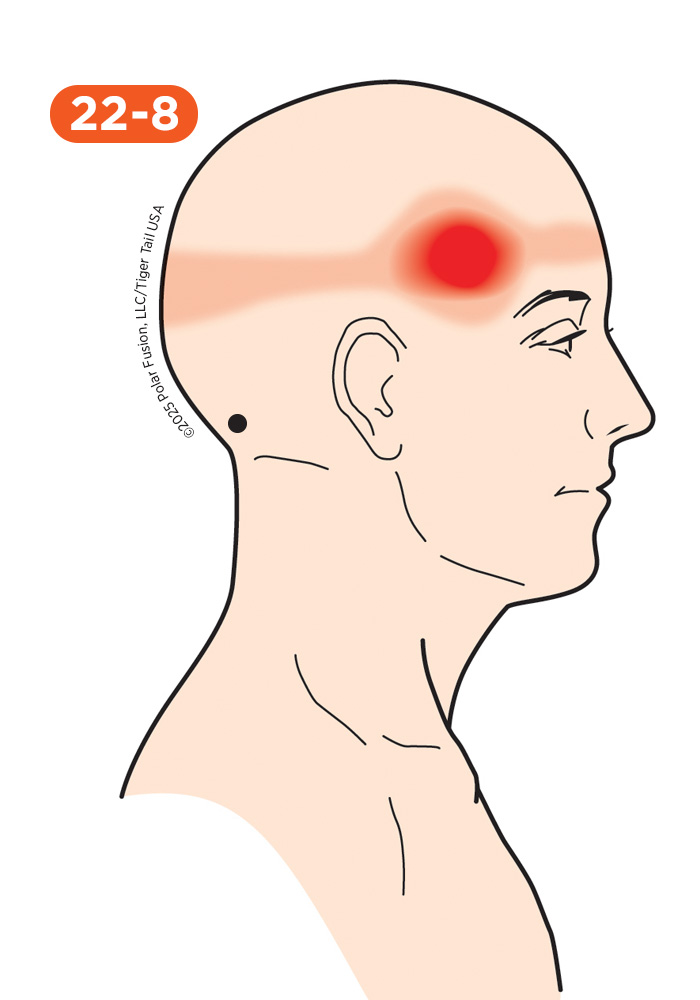
I Feel
Pain Around the Eye
That sharp, surprising pain around the eye or behind the orbit is often referred pain coming from muscle knots in a deep muscle anchoring your skull to your spine, called the semispinalis capitis. It feels like a deep, pulling tension from your neck settling right behind your eye socket. The discomfort typically focuses behind the eye and extends into the temple, presenting as a sharp, pulsing ache that can mimic more serious issues like migraines or cluster headaches. The pain tends to worsen significantly when you engage in activities that hold your head forward, such as looking down at a screen for too long, driving long distances, or reading in bed without neck support. This restriction often leaves your neck feeling stiff and can cause light sensitivity. That area is also quite reactive to touch—pressing just off-center at the base of the skull often reveals a tender, ropey spot that feels like it’s wired directly to the eye discomfort.
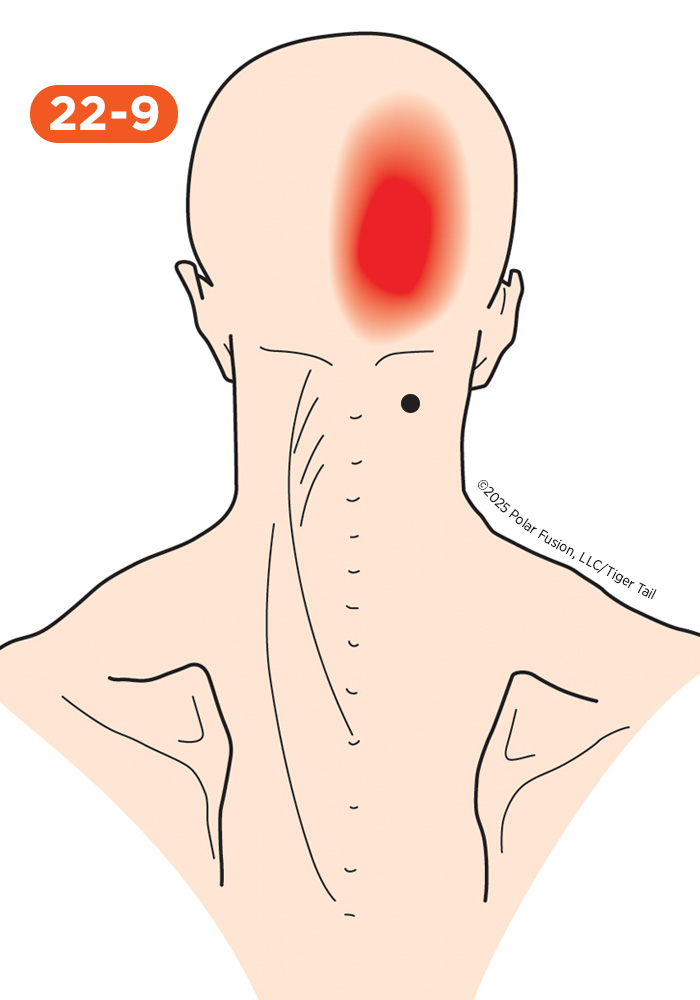
I Feel
Pain at the Back of the Head
That intense, throbbing pain at the back of your head is often caused by tight muscle knots in a deep muscle running along the back of your neck, the semispinalis cervicis. It feels like a small spike pressing into the base of your skull. The discomfort usually concentrates right where the neck meets the skull and along the back of the skull bone, presenting as a deep, constant throbbing that can mimic more serious issues like cervicogenic headaches or spinal joint irritation. The pain tends to worsen during movements that involve neck extension, such as looking up at the ceiling or holding your head back while driving. This restriction leaves your neck feeling guarded and stiff, limiting your ability to look up or turn your head comfortably. The muscle tissue deep in the back of your neck is often sensitive to pressure, feeling like a tender, dense cord.
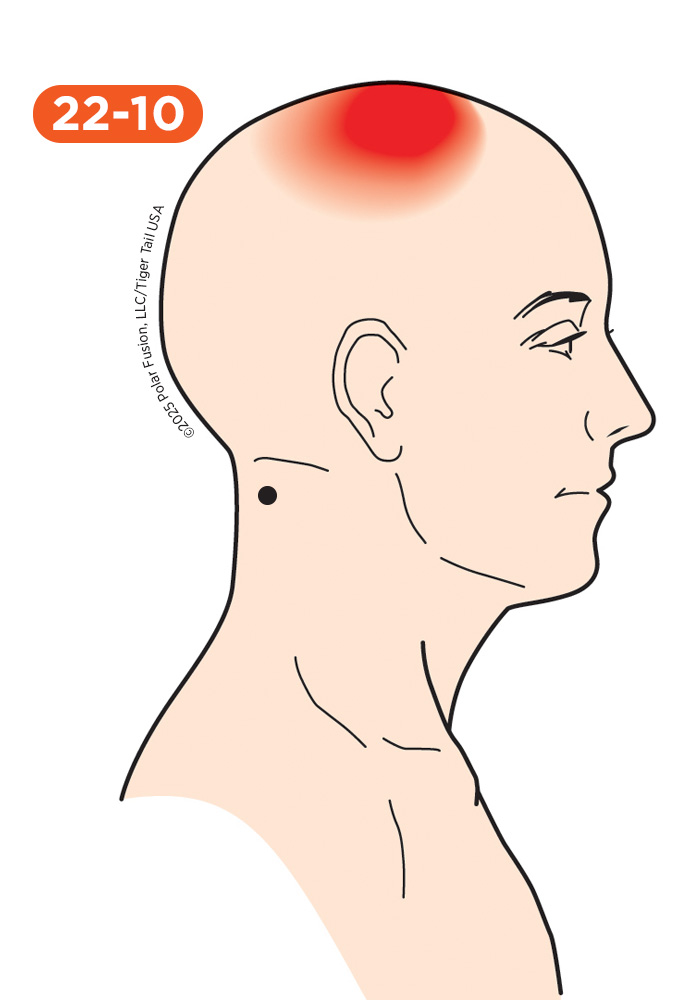
I Feel
Headaches
That intense, throbbing headache that seems to start at the back of your head is often caused by tight muscle knots in the large muscle anchoring your skull to your neck, the splenius capitis. It feels like a relentless iron band is squeezing your head from the back. The discomfort usually focuses deep at the base of the skull and wraps into the top of the head, presenting as a deep, pulsing ache that can mimic deeper problems like tension headaches or cervicogenic migraines. This painful throbbing gets significantly worse when you’re doing activities that hold the neck steady, such as driving for long periods, looking up quickly, or sleeping awkwardly on your side. The resulting restriction leaves your neck feeling stiff and guarded, severely limiting your ability to rotate your head fully. The muscle tissue high on the back of the neck, just under the skull, is often susceptible to pressure and feels like a tender, taut band.
Pain on Top of Head
It’s like someone slowly tightening a cap around the top of your head—that aching, pressure-like pain can originate from muscle knots in a muscle running from the upper spine to the base of the skull, the splenius capitis. The discomfort often feels like a dull, spreading ache or a sharp tension that radiates upward, settling across the crown of the head. It can mimic tension headaches or even early migraine symptoms, which can lead to misinterpretation. The pain worsens significantly when you turn your head sharply to one side, hold your head in a forward-leaning position while typing, or sleep with your neck twisted. You might feel guarded and tense, with limited ability to rotate or extend your neck comfortably. That area is also sensitive to pressure—pressing just below the back of the skull or along the upper neck often reveals a tender, ropey spot that feels directly connected to the top-of-head discomfort.

I Feel
Neck Pain at the Base of the Neck
It feels like someone is wedging a small rock right at the bottom of your neck—that deep, localized pain can result from muscle knots in the muscle that runs along the sides of the cervical spine, called the lower splenius cervicis. The sensation is usually a firm, aching pressure or a sharp pinch that remains focused near the lower neck, just above the shoulders. It can mimic cervical disc irritation or early signs of facet joint pain, which can make diagnosis difficult. The pain worsens significantly when you’re turning your head to look over your shoulder, lifting heavy objects with poor posture, or sitting with your head pushed forward for long periods. You may feel stiff and guarded, like your neck is bracing against movement, and it can limit how easily you can rotate or tilt your head. That area is also sensitive to touch—pressing along the lower cervical spine or just above the shoulder line often triggers a tender, knotty response.
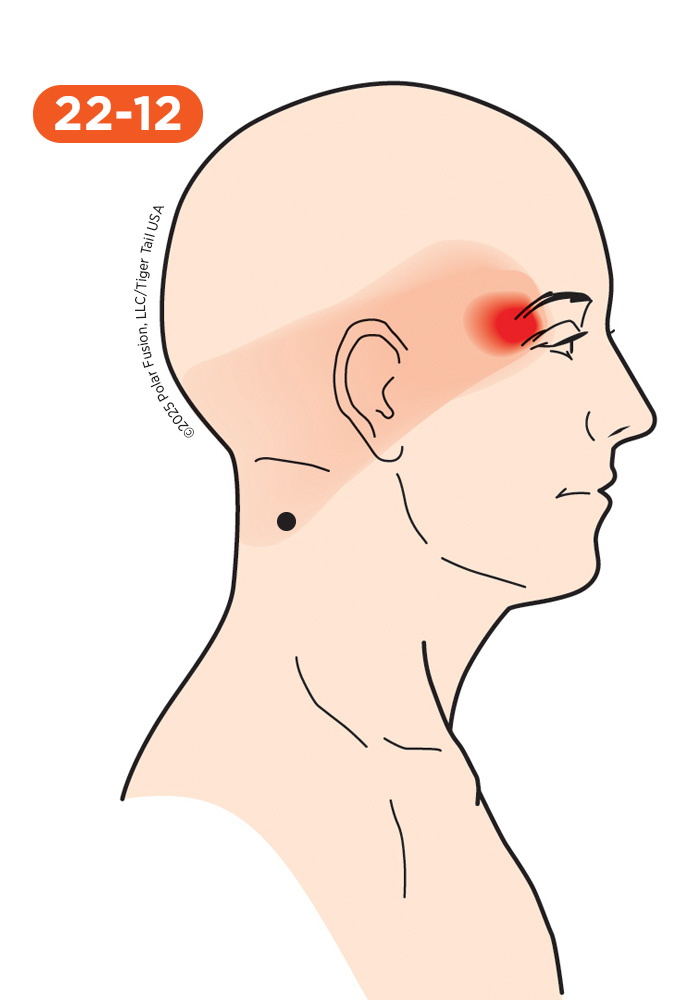
I Feel
Pain Around the Eye
That sharp, surprising pain around the eye or behind the orbit is often referred to as pain coming from tight muscle knots in the deep muscle along the side of your neck, the splenius cervicis. It’s like a tight, pulling wire from your neck settling right behind your eye socket. The discomfort usually focuses behind the eye and radiates into the temple, presenting as a sharp, pulsing ache that can mimic deeper problems like migraines or cluster headaches. You’ll find the pain becomes significantly worse when you’re doing activities that hold your head forward, such as looking down at a screen for too long, driving long distances, or reading in bed without neck support. The resulting restriction leaves your neck feeling stiff, often causing light sensitivity. The muscle tissue deep in the back of your neck is often sensitive to pressure and feels like a tender, taut band.
